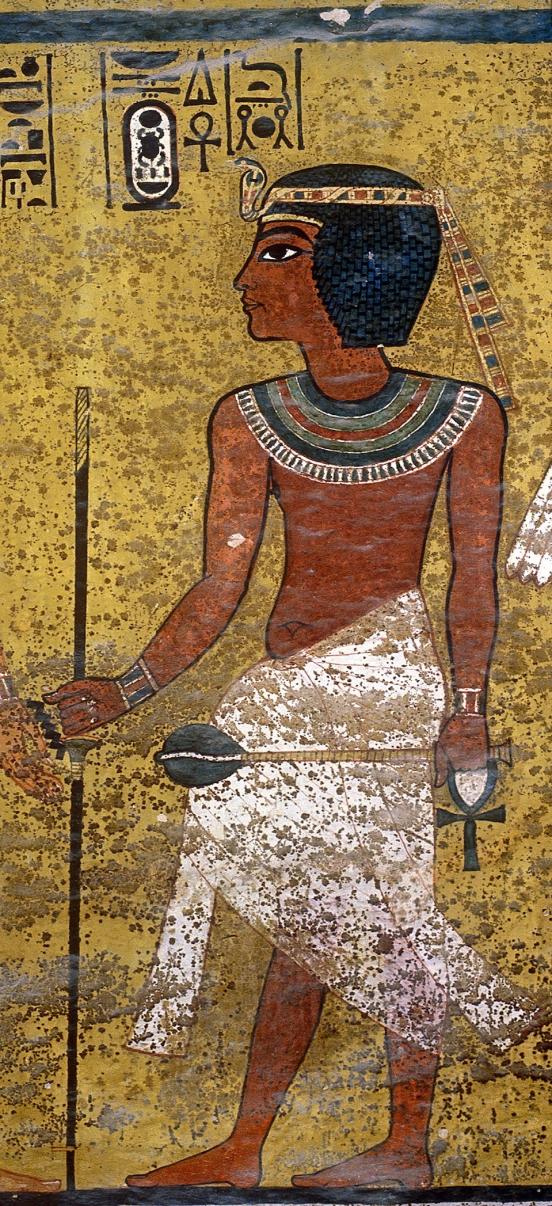Tutankhamen

A short-lived, young pharaoh in Dynasty XVIII. His tomb (KV 62) was found unplundered by Howard Carter with over 5,000 objects, many of which are gold. There are many theories about the parentage of Egypt’s most famous pharaoh, Tutankhamen. Some say he was a son of Akhenaten, others that he was his brother or half-brother, still others that he was a distant and minor relative. We know that he was born into the royal family and that he was probably raised at Amarna.
Originally named Tutankhaten (“Living Image of the Aten”), his name was changed to Tutankhamen (“Living Image of Amen”) after the death of Akhenaten and when he succeeded Semenkhkara to the throne. He was crowned pharaoh when he was only nine years old and two principal royal advisors, Iy and Horemheb, apparently managed the affairs of state. Each of these advisors would succeed Tutankhamen in turn when the boy-king died eight years after his coronation. One of the first acts of Tutankhamen’s reign was to re-open the temples of Egypt’s traditional deities. Authority was restored to priesthoods that Akhenaten had ignored, especially the priesthood of Amen at Karnak. There, and at Luxor Temple, the young king’s advisors authorized major building campaigns. A stela at Karnak, called the “Restoration Stela,” tells of these activities.
Tutankhamen died when he was only seventeen years old. The cause of death is not known, although a small fragment of bone in his skull (visible in x-rays) has led some to suggest that he was murdered. He was apparently supposed to have been buried in KV 23, but that tomb was not finished at the time of his unexpected death. He was therefore hastily interred in KV 62, buried with thousands of magnificent objects, but virtually devoid of the usual carved and painted walls. When his tomb was discovered by Howard Carter in 1922, Tutankhamen became the most famous ruler of the ancient world.
